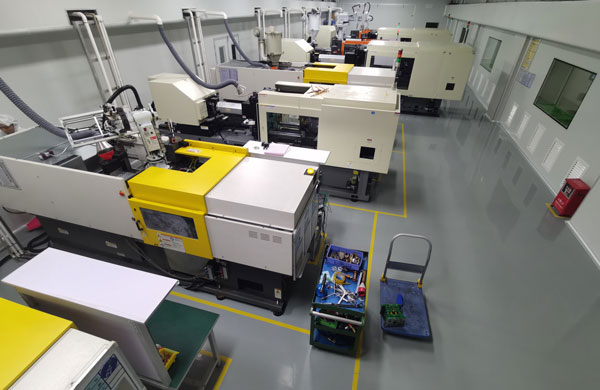In the intricate process of injection molding, every minute detail contributes to the final perfection of a product. Yet, when the plastic melt within the mold cavity encounters a sudden drop in temperature during filling, it flows in a highly viscous state, akin to semi-solidified art, inadvertently leaving fine, fingerprint-like wave patterns on the product's surface—a challenge to craftsmanship.
As temperatures continue to plummet, if the plastic melt solidifies before completely filling the cavity, underfilling becomes inevitable. These wave patterns often emerge around the edges of plastic products and at the end of the fill, becoming unwelcome guests in the pursuit of quality.

1. Rapid Gate Freezing and Insufficient Shrinkage Compensation
When the gate freezes too quickly, much like a river icing up swiftly in winter, the path for shrinkage compensation is cut off. To counteract this, increasing the temperature of the plastic melt and the mold, allowing the melt to flow freely in a low-viscosity state, while appropriately enlarging the gate size, creates a wider supply channel for the melt.
2. Insufficient Holding Pressure Leading to Wave Patterns
Holding pressure is an indispensable aspect of injection molding. If it is weak, like a candle flickering in the wind, it fails to support until the end. Strengthening the holding pressure provides a solid backbone for the melt, ensuring every drop reaches its precise destination, thereby eliminating wave patterns.
3. Temperature Drop in Stagnant Areas Fostering Wave Patterns
In the complex flow paths of injection molding, some corners are prone to becoming the "cold spots" for the melt. Adjusting the gate position and optimizing the cooling water layout maintain an appropriate temperature for the melt during flow, preventing wave patterns from silently growing in stagnant areas.
4. Slow Filling Inviting Wave Patterns
If the melt moves as slowly as a snail, the loss of temperature becomes fertile ground for wave patterns. Increasing the screw's speed and pressure is like injecting a boost into the melt; alternatively, applying external lubrication reduces pressure loss during flow, ensuring the melt completes filling in optimal condition, leaving no room for wave patterns.
In the artistic realm of injection molding, addressing wave patterns is not only a test of technical prowess but also the pursuit of ultimate detail. Each adjustment is a step towards crafting perfect products. Let us explore together, creating brilliant chapters in injection molding.